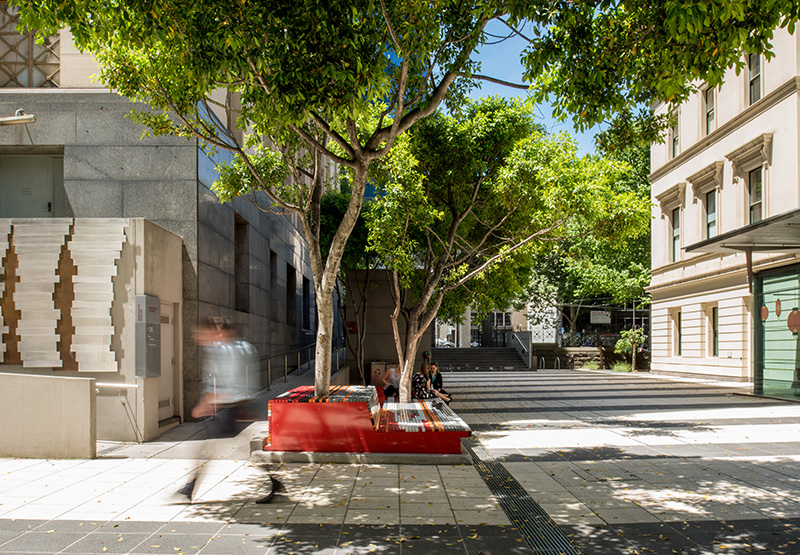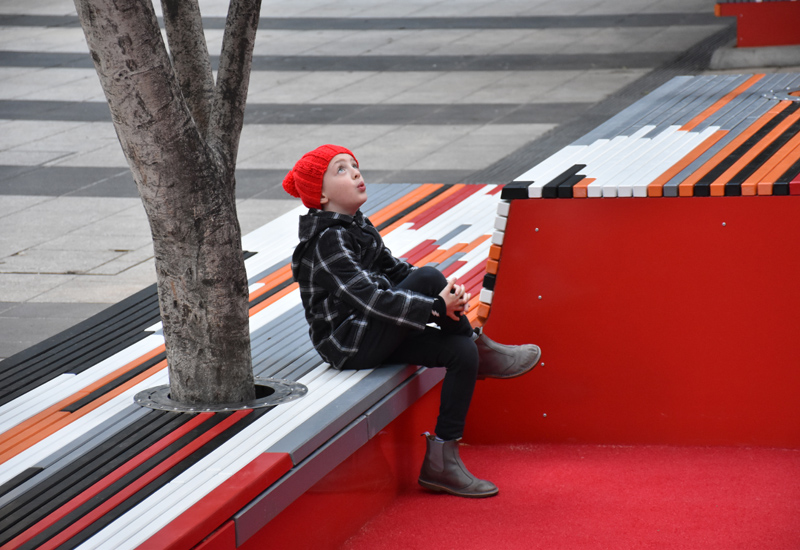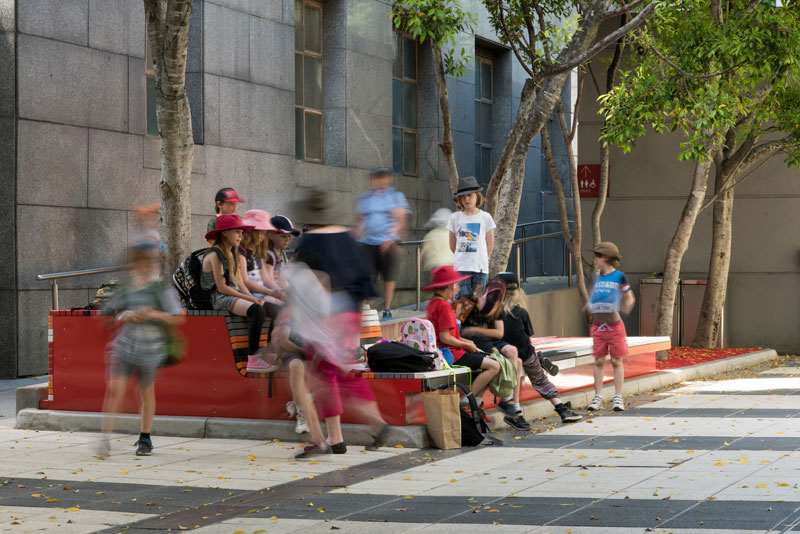Immigration Museum
Location \ Melbourne CBD
Client \ Museum Victoria
Budget \ $50,000

The Immigration Museum Activation Project was a small but significant opportunity to reconsider the underutilized rear courtyard of the Museum. Great landscapes, like museums, can connect people to their environment, culture and city context. We believed there was a disconnection between what happens inside the Immigration Museum and how the outdoor spaces presented themselves to visitors and passers-by.

The Museum’s permanent display and ongoing program of temporary exhibitions and festivals encapsulate Melbourne’s changing cultural diversity. We envisaged that the courtyards around the museum are places to continue this celebration of cultural difference.
We were presented with the challenge of a $50,000 budget, a request to find the most effective way to spend it, and three months to complete. The existing lack of social seating for visitors around the Museum drove our design response. We proposed to increase the fixed furniture and provide an orientation space for school groups and visitors to the museum. The space would also offer distinctiveness and difference from other City venues for functions and festivals. We also understood at this end of the Melbourne CBD there are few quality open spaces and an upgrade of the courtyard could unlock significant new social value for the public surrounding the Museum.

The limited budget forced us to be extremely resourceful in our site planning and built scope. In a garden bed which frames the rear of a courtyard, we thinned out the existing Ficus, retaining only trees with a successful canopy, then designed a ‘seat’ or platform around them. The seat – or urban ‘beam’ was designed to provide a variety of seating orientations. The remainder of the bed was covered in a vibrant red turf carpet garden to create a small outdoor classroom.
The Immigration Museum supported RWA’s approach that any new design incursion should be bold and colourful, referencing cultural diversity. In collaboration with the Immigration Museum’s curatorial team RWA selected a variety of Ikat patterns (a process of weaving wherein one or both the warp and weft are tie-dyed in colours) from the collection to study as it is one of the oldest known forms of textile decoration, spanning multiple cultures. These patterns informed the arrangement of coloured batterns for the seats.
This small project demonstrates just some of the ways our practice tackles crafting unique designs for projects on very tight budgets in collaboration with furniture fabricators, their knowledge of materials and construction techniques.
Images above and below by Cassandra Chilton and Chris Erskine.
Recipient of the prestigious 2018 AILA National Landscape Architecture Awards – Small Projects
The award jury cited the project as: “This project provides new seating that is carefully integrated with the existing trees to create much needed resting spots. The positioning and configuration of the benches allow the appreciation of the existing architecture and uses the shade of the existing trees to create new welcoming and enticing spaces. The materiality creates an eye-catching, joyful statement with colour and textural interest that has been well executed. Beautiful photographs and Instagram posts show the project has been embraced readily by the community”.
